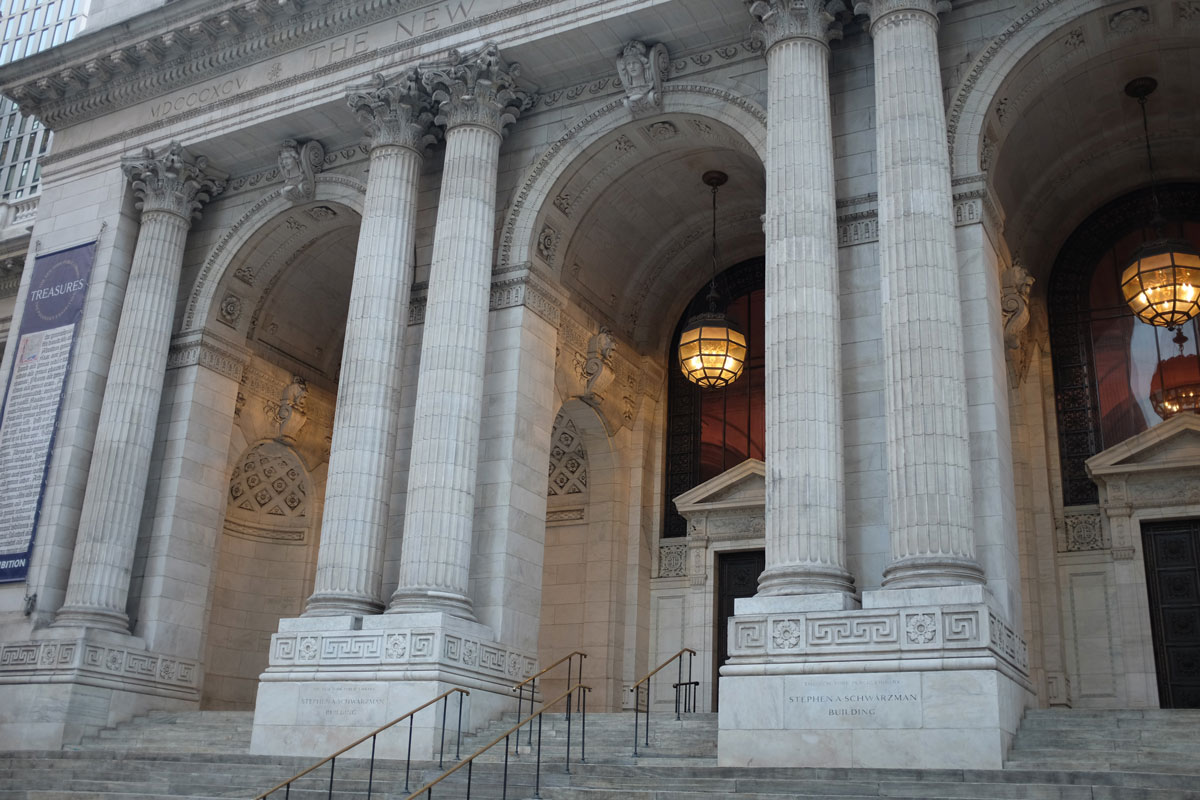New York resident Christine Cole of Precision Stone Inc professes her love for the architecture of the Big Apple.
One of the most special aspects of living in New York City is the constant sense of awe I feel every day. The city’s energy, its people, and the environment all contribute to this feeling, a wonder that has been shared by millions before me. If I’m not going to romanticise my life, who will? One of the most powerful sources of this wonder is the city’s built environment, particularly its towering stone buildings. These architectural masterpieces, crafted from materials like marble, limestone, and granite, connect us to the past and to the people who lived in different eras. They offer a humbling perspective on time, grounding us in the present while fueling a constant curiosity about history and the reasons behind the way things are. This fascination is why I frequently seek out Manhattan’s stone buildings, each a monument to history and craftsmanship. These buildings have become special to me: the New York Public Library, The Ansonia, 220 Central Park South, 1 Wall Street and the Municipal Building. They represent the city’s architectural legacy, blending historical significance with lasting impact.
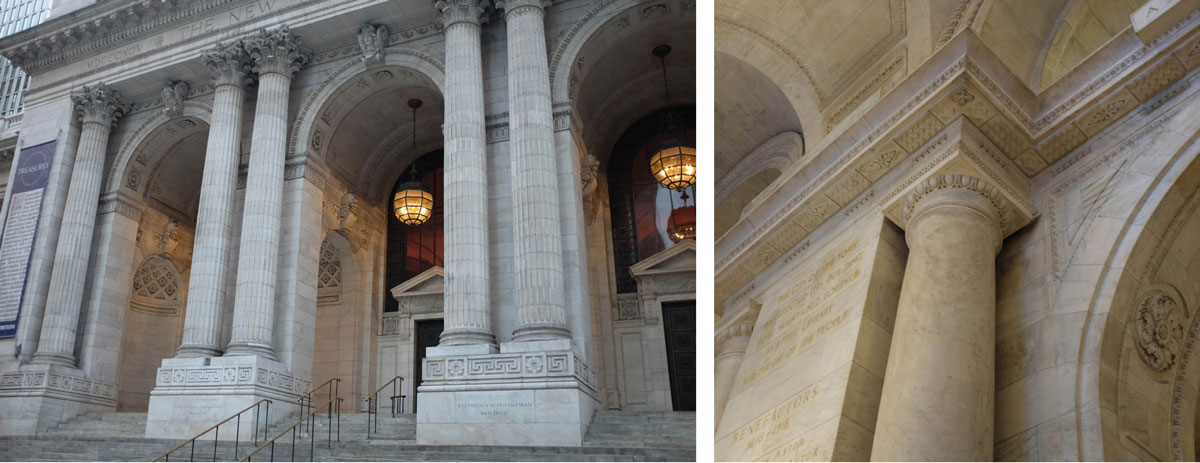
New York Public Library
First, let me begin with the building I’m lucky enough to call my neighbourhood library. The city’s main branch, officially known as the Stephen A. Schwarzman Building, is a grand example of Beaux-Arts design. Completed in 1911, the library was designed by John Merven Carrère and Thomas Hastings, who drew inspiration from classical European architecture, as many of New York’s historical landmarks do. The general contractor for the library’s construction was Theodore Starrett of Starrett & Van Vleck. The exterior is clad in white Vermont Danby marble, which immediately captures the attention of passersby. There’s a timeless elegance to the grand staircases leading to towering Corinthian columns. The facade makes you feel important as you enter, a fitting sentiment given that knowledge is power. You also feel empowered by the iconic lion statues, Patience and Fortitude. These beautiful beasts were designed by Edward Clark Potter and carved from pink Tennessee marble by the Piccirilli Brothers, an Italian family of stonemasons who also worked on several other major sculptures around the city. Inside, the library is equally breathtaking, with vast reading rooms, high vaulted ceilings, and exquisite woodwork complementing the stone. There are several places to study, including a rooftop terrace. The library stands as a symbol of the city’s dedication to knowledge, culture, and architectural excellence.
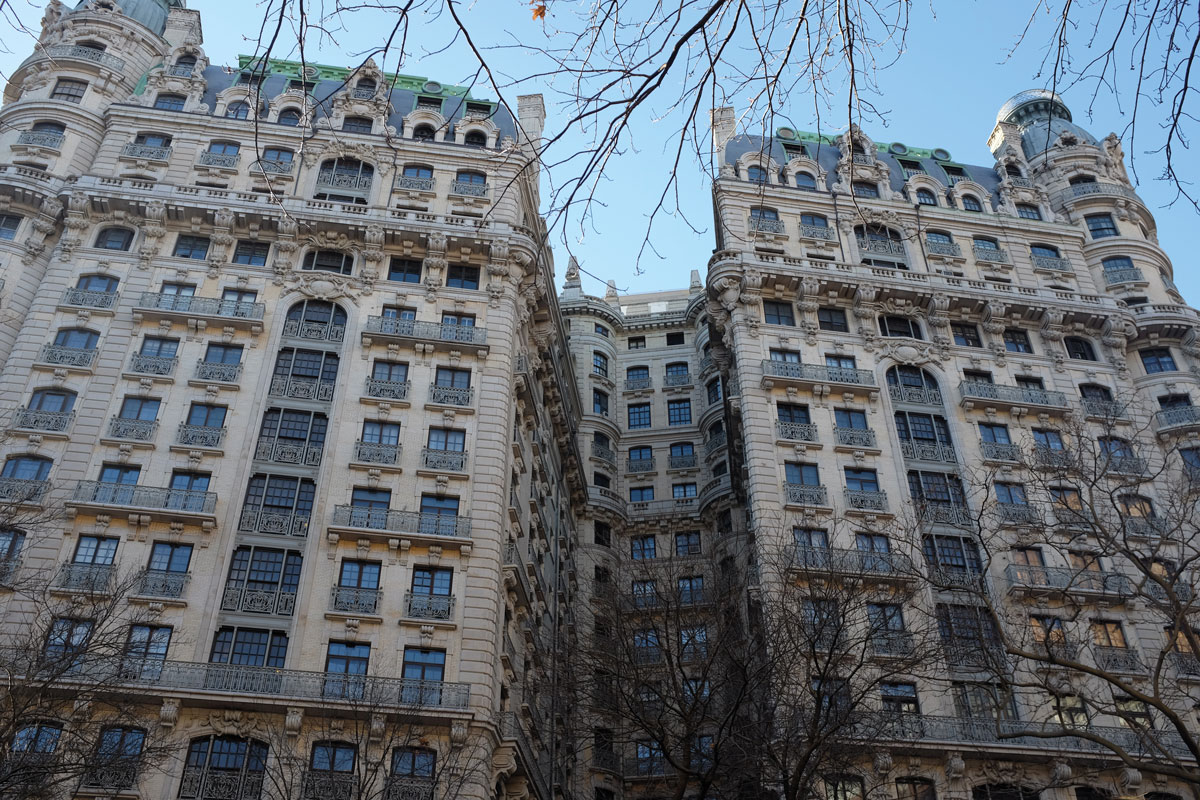
The Ansonia
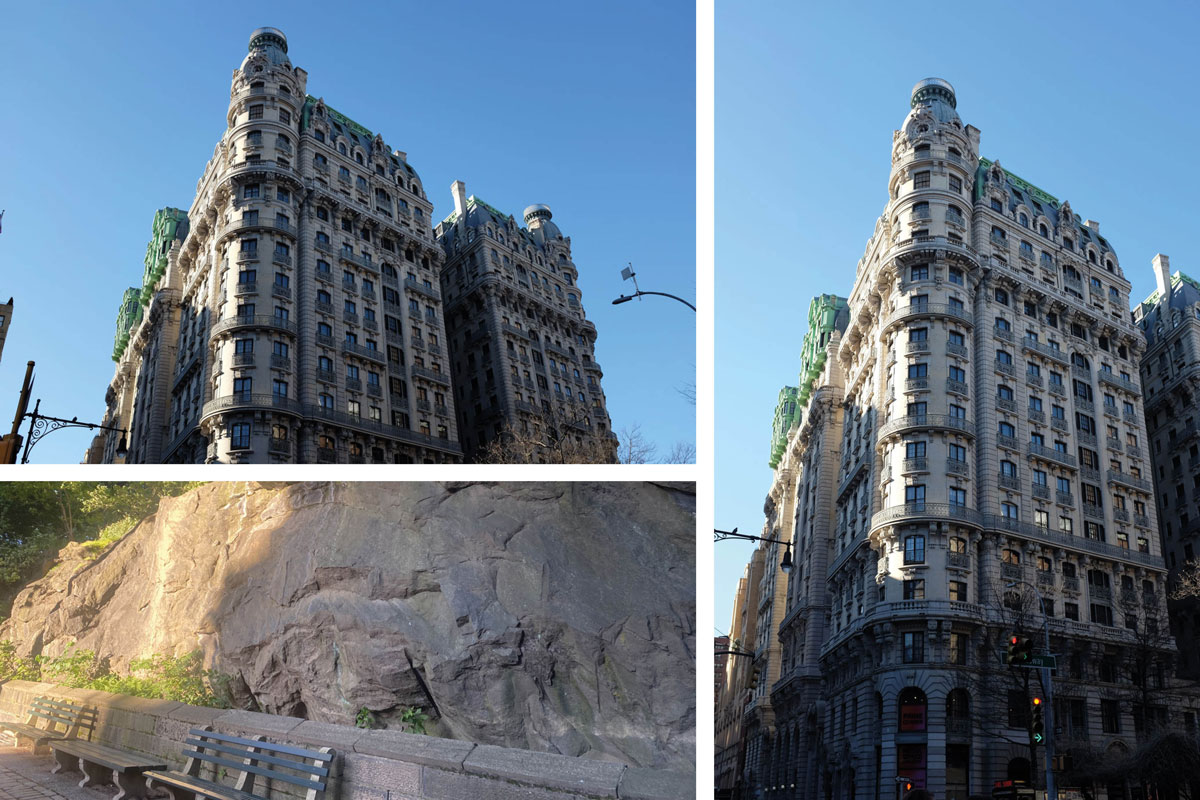
Next, you’ll find another stunning example of Beaux-Arts architecture uptown: The Ansonia. This residential building on the Upper West Side, at the corner of Broadway and 73rd Street, was completed in 1904 and designed by French architect Paul E. Duboy. Originally built as a luxurious hotel, the construction was overseen by Michael Reid & Co. The building’s striking limestone and brick facade is adorned with sculptural details, rounded corner towers, and a mansard roof that evokes Parisian architecture. The Ansonia has hosted many celebrities, including Bobby Short, Babe Ruth, and Angela Lansbury. In the 1970s, it was also home to Plato’s Retreat, a famous swingers’ club. I can’t help but wonder if the club’s founders simply wanted an extravagant building to match their extravagant evenings. The Ansonia is undeniably a part of New York’s cultural fabric. Its location, just steps from Central Park, adds to its appeal. For geology enthusiasts, Central Park is a real treat, as the exposed bedrock and Manhattan Schist peek out among the high-profile residences.

220 Central Park South
A short walk through the west side of the park also brings you to my next featured building: 220 Central Park South. Designed by Robert A.M. Stern Architects and completed in 2019, this neo-classical skyscraper is clad in Alabama Silver Limestone and is the most contemporary structure on my list. Rising 953 feet, the tower features a setback structure, large windows, and intricate detailing with Art Deco influences. Lendlease, an Australian construction giant, served as the main contractor. Amid the glass-and-steel skyscrapers of “Billionaire’s Row,” this cream-coloured beauty stands out as a testament to modern luxury and refinement. The history of Central Park South itself is intertwined with New York’s social and real estate evolution, but for now, I’ll also just bring attention to the Irish Connemara marble that graces the entrance arch.

1 Wall Street
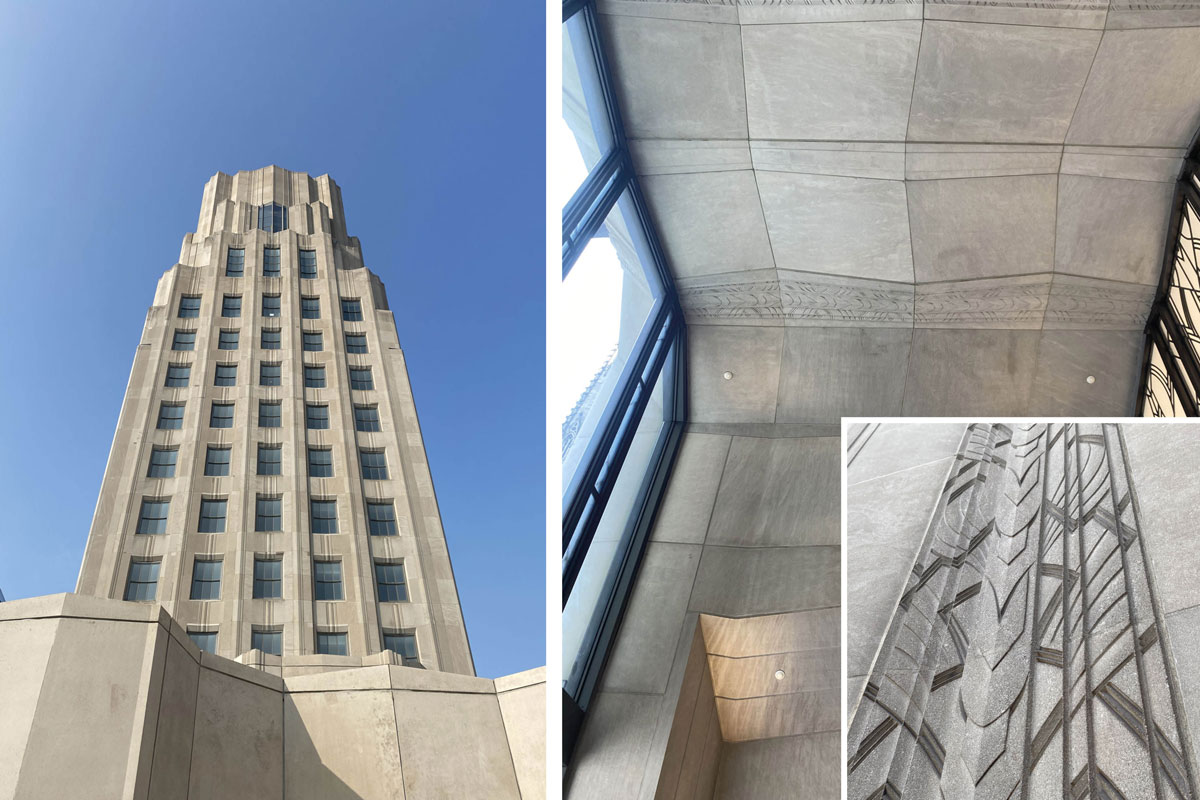
We then travel downtown to another significant landmark: 1 Wall Street. Originally built as the Irving Trust Bank, this building is sometimes called “the other Art Deco skyscraper.” Though it doesn’t have a massive spire or antenna like the Empire State Building, it still has its own charm and sculptural beauty. Completed in 1931, the building was designed by architect Ralph Walker, with the construction overseen by Marc Eidlitz & Son, Inc. The exterior, clad in Indiana limestone, features a streamlined vertical design with subtle geometric ornamentation and detailing. Inside, the building boasts the spectacular Red Room, a mosaic-clad lobby designed by Hildreth Meière. In recent years, it’s been converted into luxury residences, blending historical grandeur with contemporary living. I had the privilege of touring one of the remodelled residences last year with the Institute of Classical Art and Architecture. The area around 1 Wall Street is also historically rich, with cobblestones laid during the industrial boom in the 1800s, mimicking the original Dutch paving from when the area was known as New Amsterdam. There’s so much history beneath your feet.
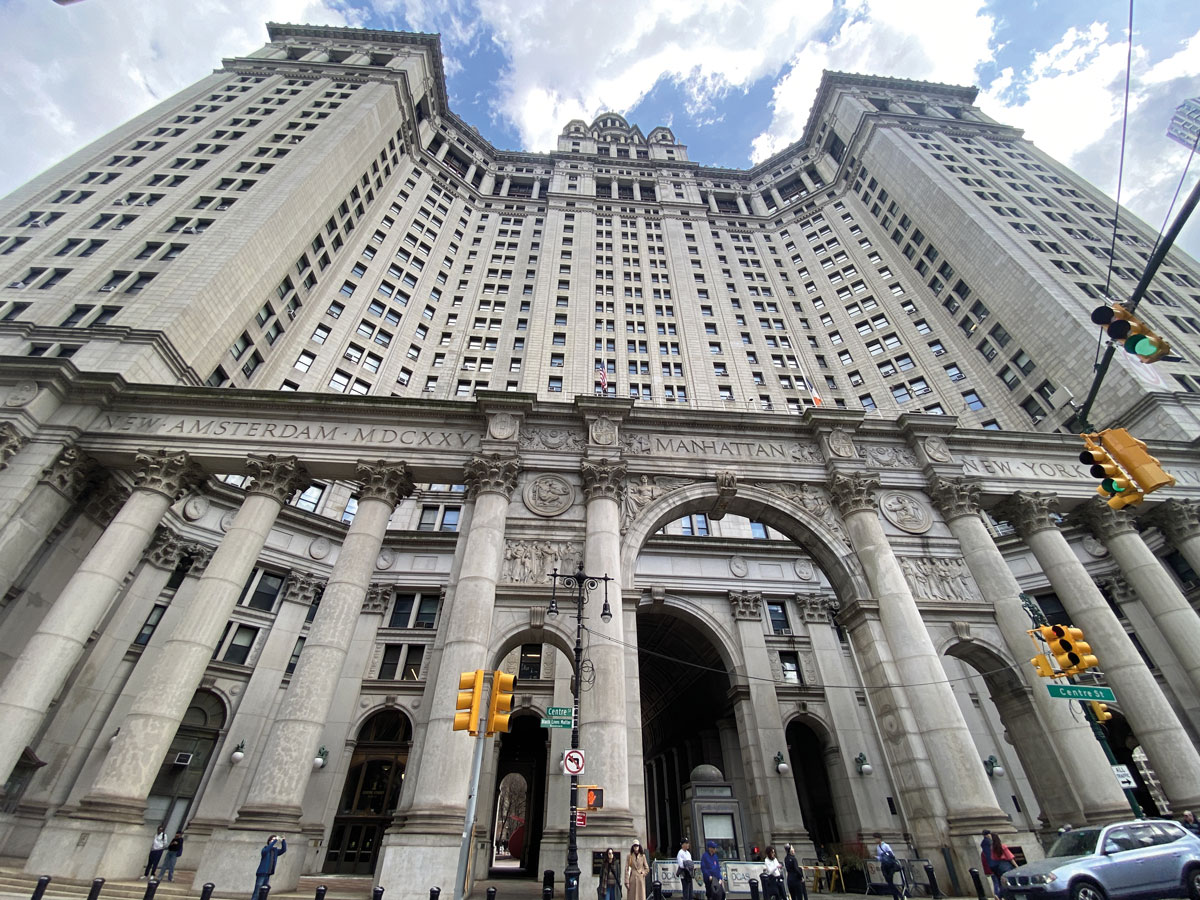
David N. Dinkins Municipal Building
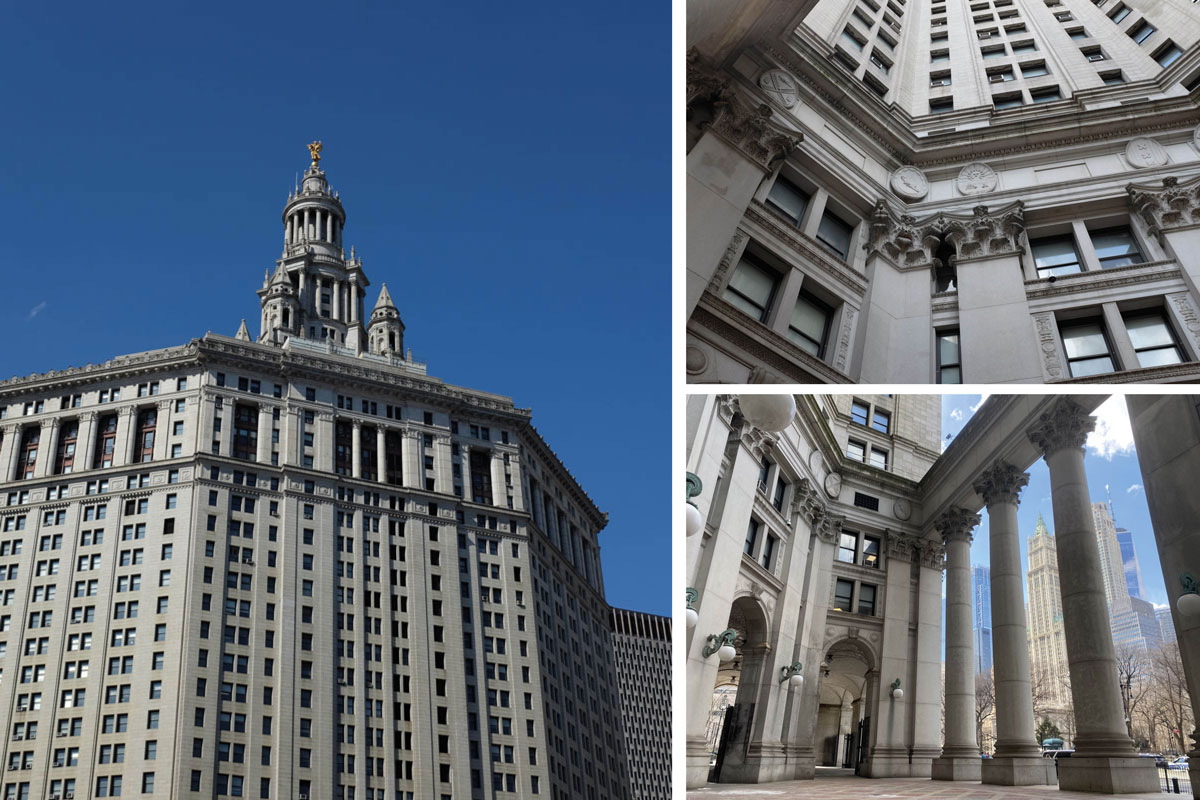
Finally, I’d like to highlight the David N. Dinkins Municipal Building, one of New York’s most important government structures. The building was designed to accommodate the increased governmental space demands after the 1898 consolidation of the city’s five boroughs. Completed in 1914 and designed by William M. Kendall of McKim, Mead & White, the building exemplifies ancient Roman influences with its classical detailing and colonnade. It’s truly a monumental structure—one of those buildings that makes you exclaim, “People just don’t make these anymore!” The building’s primary materials include Ashlar granite and terracotta, and it features a central tower crowned by the gilded statue ‘Civic Fame,’ sculpted by Adolph A. Weinman. The Thompson–Starrett Company, a leading construction firm of the early 20th century, built the Municipal Building. One of its most unique features is its integration with the subway system, an innovation in early 20th-century urban planning. This was originally where the metro trains were supposed to meet, but that location was switched to Grand Central Station. As I hope you can tell by reading this far, I admire fine details: the many reliefs above are adorned with shields, including one with a beaver, a nod to John Astor and his family’s fortune made in the beaver pelt trade.
This area of downtown is often overlooked by locals, with many of my friends saying they “never get down there.” However, after I shared my stone-seeking adventures with them, they expressed appreciation for the reminder to explore. The highlight of my photography session was when a woman passing by stopped me to ask about the ceiling of the arch I was photographing. She had never noticed the detail before and was grateful for the new perspective. My job was done.
Though I say this comically, it genuinely gave me joy to show someone else the hidden stone details of New York’s built environment. I enjoy learning how things came to be and discovering where the materials came from. I enjoy getting to sit and reflect about the stonemasons and construction workers who used their muscles and minds to build these structures. I enjoy analysing why these works of art instill awe in me everyday. Most of all, I hope this inspires at least one other person to look up and research the fascinating history behind their favourite building.

